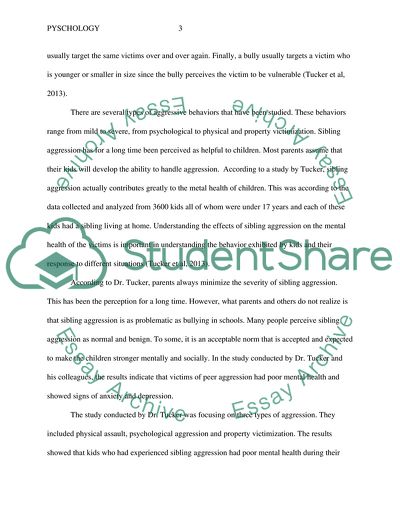Cite this document
(Effects of Bullying and Peer Aggression on Mental Health Coursework Example | Topics and Well Written Essays - 2750 words, n.d.)
Effects of Bullying and Peer Aggression on Mental Health Coursework Example | Topics and Well Written Essays - 2750 words. https://studentshare.org/psychology/1816396-victims-in-peer-or-sibling-aggression-would-more-likely-to-experience-mental-health-issues
Effects of Bullying and Peer Aggression on Mental Health Coursework Example | Topics and Well Written Essays - 2750 words. https://studentshare.org/psychology/1816396-victims-in-peer-or-sibling-aggression-would-more-likely-to-experience-mental-health-issues
(Effects of Bullying and Peer Aggression on Mental Health Coursework Example | Topics and Well Written Essays - 2750 Words)
Effects of Bullying and Peer Aggression on Mental Health Coursework Example | Topics and Well Written Essays - 2750 Words. https://studentshare.org/psychology/1816396-victims-in-peer-or-sibling-aggression-would-more-likely-to-experience-mental-health-issues.
Effects of Bullying and Peer Aggression on Mental Health Coursework Example | Topics and Well Written Essays - 2750 Words. https://studentshare.org/psychology/1816396-victims-in-peer-or-sibling-aggression-would-more-likely-to-experience-mental-health-issues.
“Effects of Bullying and Peer Aggression on Mental Health Coursework Example | Topics and Well Written Essays - 2750 Words”. https://studentshare.org/psychology/1816396-victims-in-peer-or-sibling-aggression-would-more-likely-to-experience-mental-health-issues.


